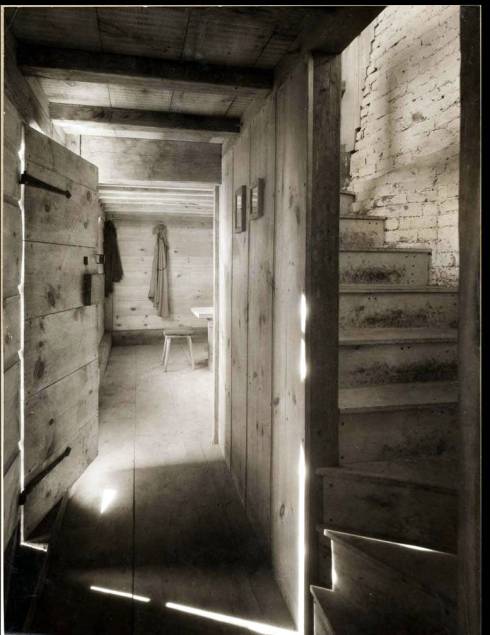Talk of serendipity. Rather, it's just paying attention. We have been too busy of late to do proper research but are now back in action. One of our goals is to fill in the generations post Thomas and Margaret up to about 1900. It was the 5th generation that bore the brunt of the Revolution with guidance from the 4th gen, if you would. Then, two generations this way is when we saw the blooming of the area (Salem and Boston) with international trade really taking off.
At the same time, we saw western movement as the middle of the country filled in. Of late, we have looked at plenty of families scattered all over the landscape. And, looking closely resulted in a more full view of the issues of being on the frontier. One huge group sort of points to a little movement, say from North Carolina to Tennessee, as sufficient to cover the rest. That is not so, as we will bring forth. Things were much more shaky the further west one went. Boone, himself, got to the eastern side of Missouri. That was near the Mississippi River. It's a long way from there to Oregon, though there are tales of the old guy going out to the Yellowstone area and back (we'll look at that more closely).
But, we digress. Earlier, we put a descendant's list out which had not been verified (almost a decade ago). It was suggestive of research to be done, say. So, we're starting from that point where we split the list by child. The last one was Samuel (child #6). Today, Miriam came up. She married John Hill. One of their daughters married a Dow.
So, we remembered that we have referred to a Dow several times, namely George Francis Dow. This was in the context of the Great House (Cape Ann). There are several posts of early dwellings (The 1st year) which precipitated the Wikipedia article. After finding the obituary on George Francis Dow (at the site of the American Antiquarian Society), we found his parents (and will look further). But, his wife was Alice G. Waters who did a bibliography for The Diary of William Bentley (mentioned here, a few times: example).
So, seeing Waters got the notion of how this all relates to Thomas Franklin Waters (writer on Ipswich among other topics). As well, TF Waters was an editor of The Massachusetts Magazine spearheaded by Dr. Frank. So, there are things to pursue in the vein.
Now, back to the gist of the post. We found this post on GF Dow in the Streets of Salem (Donna Seger's) blog. It has better pictures than I have seen before. Note, the Wikipedia article was started in 2012. As well, the post has pointers to further information.
 |
| Crafting a Colonial Salem Streets of Salem |
Higginson saw the house and wrote of it. So did Anne Bradstreet. Endicott played host to Winthrop as that late arriving group stopped by Salem long enough to express displeasure with the little area. Anne Bradstreet wrote of her shock about the situation. Back in jolly old England, they were told of good houses, paved streets (of gold), and such (tongue-in-cheek).
Oh yes, Thomas' or Margaret's house? Or Conant's? It was put up by the original crew from material brought over. They didn't have time (or the tools) to do all of the fabrication work. There was one remark that we saw about the material (for the house) having be prepared for transport. When Conant went over to Massey's Cove, the Gardners had Cape Ann to themselves? When Winthrop enjoyed his feast, his crew had gone over to Cape Ann to pick strawberries. Many tales to consider.
You know, all of the western movements (there were several, and we have the families and their histories to study) faced something similar. And, it was more than just the sod houses of the prairie.
An aside: many genealogists have no clue, it appears to me, that their paper chase bears little on the reality (essence) of people's lives. How can we correct that lack of insight?
No comments:
Post a Comment